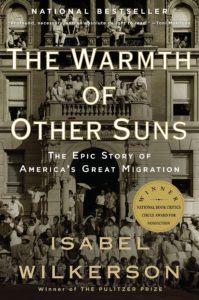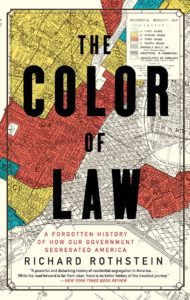Before diving in, I wanted to reiterate a point that I’ve made many times—the concept of race is…garbage. Unfortunately, in order to write about historically rooted issues, there’s no choice but to reference the outdated, arbitrary terminology that our uninspired politicians and political commentators insist on reinforcing. With that off my chest, here’s a definition of the Great Migration along with a little history and 10 numbers that’ll put it all together.
Definition
The American Civil War resulted in the end of slavery, formalized in 1865 by the 13th Amendment to the US Constitution. Sadly, conditions for freed slaves remained suboptimal. Segregation was sanctified by the so-called Jim Crow laws, and economic opportunities were not particularly abundant. Of course, above and beyond mere economic deprivation was the fact that conditions could occasionally become life threatening, with lynching being an accepted part of southern culture.
So Black southerners did what anyone of sound mind would do—they left. From approximately 1910-1970, an estimated six million Black Americans moved from the rural South to more industrialized parts of the country—the Northeast, the Midwest, and the West. Aside from escaping substandard conditions, one of the main draws was employment, incentivized further by companies in the aforementioned regions that were in need of reliable labor.
The Result
To continue the story, I’ll use the words of Isabel Wilkerson, author of The Warmth of Other Suns, the authoritative account of the Great Migration.
The Great Migration would become a turning point in history. It would transform urban America and recast the social and political order of every city it touched. It would force the South to search its soul and finally to lay aside a feudal caste system. It grew out of the unmet promises made after the Civil War and, through the sheer weight of it, helped push the country toward the civil rights revolutions of the 1960s.
Stated less eloquently, when “pundits” fail to draw a connection between slavery and urban America, it is the Great Migration that they conveniently choose to overlook. And that connection, it could be said, wasn’t always pretty.
Upon arrival to industrial centers, Black migrants were not necessarily embraced with open arms. Immigrants from across the Atlantic viewed the influx of labor as competition, and multiple layers of government—including the Federal Housing Administration—worked together to ensure that housing was segregated. The latter tragedy—one that impaired social mobility, concentrated poverty, and all but guaranteed a host of social ills—is exquisitely outlined in Richard Rothstein’s The Color of Law.
Of course, not all was negative, and some of the country’s most important cultural movements resulted from the amalgamation of intellectual and artistic forces, with the Harlem Renaissance being a prominent example. Fast forward several decades, and the powerful art form of hip hop began to take hold. Some took issue with the anger expressed in the music (see video below), but an understanding of the history suggests that we perhaps shouldn’t have been expecting “Happy and You Know It.” Finally, as mentioned by Wilkerson, the critical mass required to achieve (some of) the necessary social upheaval was reached.
Over time, as the manufacturing jobs that had served as a draw disappeared and the land of opportunity morphed into the Rust Belt, the Great Migration came to an end. In fact, as the South moved beyond its dark history and attracted novel employment opportunities, a New Great Migration began, seeing a slow return of Black Americans to the parts of the country their families had once fled.
Some Numbers
As promised, here are a few stats to help solidify the picture.
4 million
The estimated number of Black Americans who were enslaved at the start of the Civil War in 1861, amounting to nearly 13 percent of the US population at the time.
10 million
An approximation of the number of Black Americans in the US as of the 1910 Census.
90
The percent of Black Americans who lived in the South in 1910 (meaning 10 percent lived in other parts of the country).
53
The percent of Black Americans who lived in the South in 1970 (meaning 47 percent lived in other parts of the country).
57
The percent of Black Americans who lived in the South as of 2010, supporting the existence of the New Great Migration.
41.1 million
The number of Americans that are considered Black or African American alone as per the 2020 Census. That amounts to 12.4 percent of the overall population. When including those who are Black or African American in combination with another group, the number rises to 46.9 million (or 14.2 percent of the overall population).
33
The percent of the prison population in the US that is Black.
19.5
The percent of Black Americans living below the poverty line as of 2020, compared to 11.4 percent for the country as a whole.
41.4
The percent of residents of Washington, DC, classified as Black or African American.
1.12
The percent of residents of Great Falls, Virginia—one of the wealthiest suburbs of Washington, DC—classified as Black or African American.
It goes without saying that this story continues to be told. We can only hope that one day, there will be no sequel.


2 Responses
Wonderful article. Good 👍 👍 👍
Thank you!